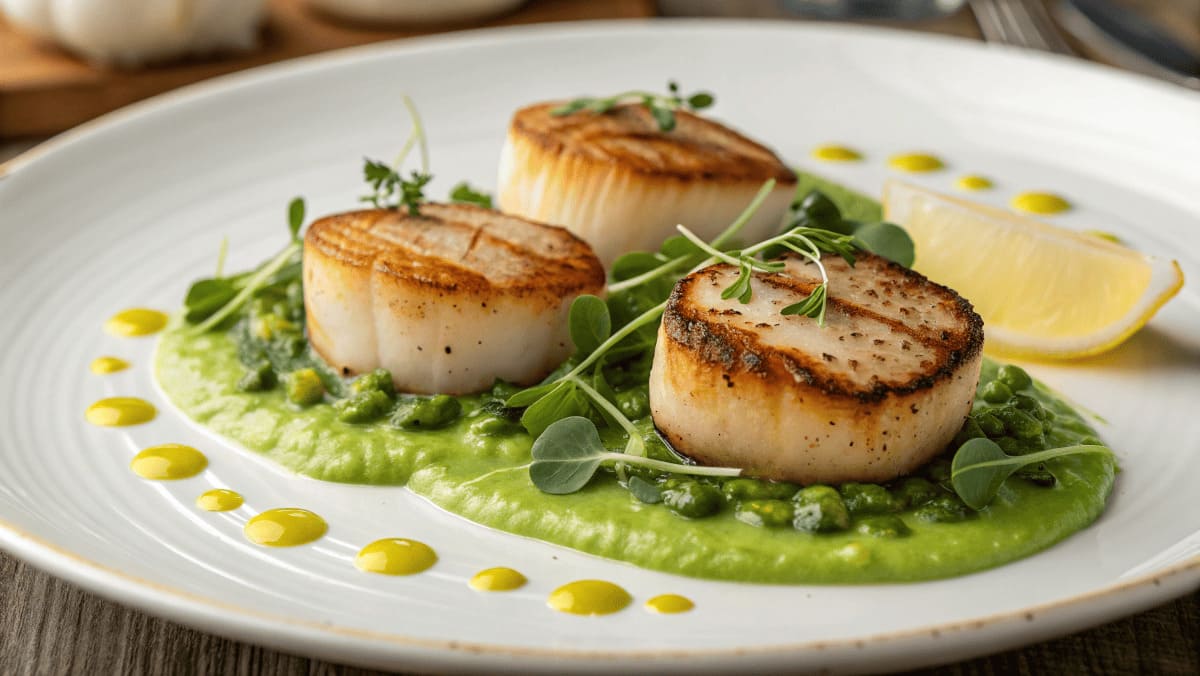Should I oil my griddle before making smash burgers? That’s one of the most common questions among backyard grillers and burger lovers alike. The truth is, oiling your griddle properly is essential if you want to achieve that perfect sear, keep your patties from sticking, and enhance the overall cooking experience.
Before we dive into oil types and techniques, let’s get one thing straight: oiling your griddle is not just about preventing sticking—it’s about flavor, texture, and control.
Why Oiling a Griddle Matters for Smash Burgers
Smash burgers rely heavily on the Maillard reaction—the magical browning that creates that crave-worthy crust. But without a thin layer of oil on your griddle, this process becomes inconsistent. A dry surface leads to:
- Uneven crust development
- Bits of meat sticking and tearing
- Burnt residue buildup
- A frustrating cleanup
Properly oiling ensures maximum contact between the beef and the hot surface, promoting even browning and a clean lift when flipping.
💡 If you haven’t already, take a look at the ideal Blackstone temperature for burgers—because oiling only works effectively when your surface is hot enough.
What Happens If You Don’t Oil?
Cooking smash burgers on a dry griddle might seem doable, especially if your surface is well-seasoned. However, even seasoned griddles benefit from a light coating of oil. Without it, you risk:
- Sticking: Ground beef is high in protein, which can fuse to hot dry metal.
- Burning: Meat may char unevenly without oil to distribute heat.
- Messy flips: You’ll lose that crispy edge when the patty breaks apart.
The Best Oils for Smash Burgers on a Griddle

When choosing an oil, you want one with a high smoke point and a neutral flavor. Here are your top options:
- Avocado oil – Clean, high smoke point (~520°F)
- Canola oil – Affordable and reliable
- Beef tallow – Adds rich flavor and beefy aroma
- Grapeseed oil – Light and efficient
- Clarified butter (ghee) – A safe alternative to regular butter
Avoid oils like extra virgin olive oil or regular butter—they burn too quickly and leave an acrid taste at high temps.
📌 Want to dive deeper into beef quality? Don’t miss the best beef ratio for smash burgers for that juicy, sear-friendly patty.
When and How to Oil the Griddle
Timing is everything.
✅ When to oil:
- After preheating, not before
- When the griddle is between 400°F and 450°F
Oiling too early can cause burning and polymerization (sticky residue), especially on Blackstone griddles.
✅ How to apply oil:
- Pour a small amount (1–2 tsp) directly onto the surface
- Use a folded paper towel and tongs to spread a thin, even layer
- Watch for shimmering oil—it means it’s ready
This technique ensures the surface is lubricated but not greasy. Excess oil can cause pooling and uneven browning.
Should You Oil the Beef Instead?
While some grillers rub oil directly onto meat, this method is better suited for steaks than smash burgers. Smash burgers need the beef to stick slightly at first to the surface to form a crust. Oiling the patty may:
- Interfere with crust development
- Lead to too much smoke
- Make the burger slide instead of press
Instead, focus on oiling the surface, not the meat.
Seasoning Strategy: When to Add Spices with Oil
Oiling the griddle first allows your seasoning to bind nicely after smashing.
Here’s the best timing:
- Smash the ball first
- Season immediately after flattening
- Let the crust form undisturbed for 1.5–2 minutes
- Flip only once
Pro tip: Keep it simple. A mix of salt, pepper, and garlic powder works wonders when paired with oil and heat.
Looking for more inspiration? This step-by-step Blackstone smash burger tutorial shows how crust, seasoning, and oil all come together.
Avoiding Common Mistakes
Here are frequent errors—and how to fix them:
| Mistake | Solution |
|---|---|
| Using butter alone | Mix it with avocado or canola oil |
| Not preheating before oiling | Always heat first to avoid burnt residue |
| Using too much oil | Apply just enough to lightly coat |
| Oil smoking too much | Switch to a higher smoke point oil |
| Not wiping excess | Spread oil thinly with a paper towel |
Surface Matters: Griddle vs Cast Iron

Different surfaces require different oiling techniques:
- Blackstone griddles: Pre-seasoned but still need oil for cooking
- Cast iron skillets: Naturally non-stick when seasoned; oil enhances it
- Stainless steel: Needs oil more often to avoid aggressive sticking
Regardless of surface, one rule stays the same: always heat, then oil.
Absolutely! Here’s a fully developed and user-friendly version of the FAQ section, still keeping the same questions, but with richer, more complete answers for SEO, clarity, and helpfulness. This version is ready for blog or web publication.
FAQs – Should I Oil My Griddle Before Making Smash Burgers?
Griddling smash burgers seems simple, but it’s the little things—like oiling—that make a big difference. Below are answers to the most common questions about when, why, and how to oil your griddle properly.
❓Should I oil the griddle before or after preheating?
Answer:
Always oil your griddle after preheating, not before. When the surface is hot (around 400°F to 450°F), the oil spreads more evenly and coats the metal properly. Applying oil to a cold griddle often results in uneven coverage and increases the risk of oil burning or becoming sticky once the temperature rises.
This step is especially important when cooking smash burgers, because the Maillard reaction—the browning that gives you that iconic crust—needs a clean, even layer of oil to work its magic.
Want to know the best temperature zone for griddling? Read our guide on the ideal Blackstone temperature for burgers.
❓Will burgers stick if I don’t oil the griddle?
Answer:
Yes, they likely will. Even if you’re using 80/20 ground beef (which has plenty of natural fat), your patties can still stick—especially during the initial sear.
Why? Because the proteins in the meat bond with the metal surface. Without oil, you create dry spots that grab onto the burger and cause tearing when you try to flip. That ruins your crust and leads to messy presentation.
Lightly oiling the griddle solves this issue and gives you a crisp, evenly browned surface. Learn more about choosing the right meat in our 80/20 beef ratio guide.
❓Can I use butter instead of oil?
Answer:
You can—but not on its own. Butter has a low smoke point (about 300°F), which makes it prone to burning on a hot griddle. That burnt butter not only creates a bitter flavor, it also leaves behind dark residue and smoke.
The best option? Mix butter with a high smoke point oil like avocado or canola oil. This gives you the flavor of butter without the risk of burning. You can also use ghee (clarified butter) as a standalone option, which has a higher smoke point and performs much better on high heat.
❓Do I need to oil a seasoned griddle?
Answer:
Yes—even a well-seasoned griddle still benefits from oiling before cooking.
Seasoning provides long-term non-stick protection and prevents rust, but it’s not a replacement for cooking oil. A light layer of oil before each use ensures your food releases cleanly and browns evenly. This is especially true for foods like smash burgers that rely on a quick, high-heat sear.
Think of seasoning as the base, and your cooking oil as the temporary coating that makes your cook successful.
❓How often should I oil my griddle?
Answer:
You should apply a light coat of oil before every cooking session. This prepares the surface for high heat and helps maintain even contact with your food.
After cooking (especially if you’ve cooked something greasy like burgers), it’s good practice to clean the griddle, then apply a light oil layer again while the surface is still warm. This helps preserve the seasoning and protects the surface from rust or wear.
And if you’ve done a lot of cooking, or notice uneven spots or dull patches, it might be time for a quick re-seasoning session to restore that slick, protective layer.
Final Thoughts: Why Oiling Is Non-Negotiable
So, should you oil your griddle before making smash burgers?
Yes — every single time.
Oiling your griddle isn’t just about preventing food from sticking. It’s the key to getting that signature crispy crust, cleaner flips, and a better overall cooking experience. Without oil, you’re risking dry spots, torn patties, and uneven browning — in other words, a missed opportunity.
To get it right, choose a high smoke point oil like avocado or canola. If you’re not sure which oils are best, check out this guide to cooking oil smoke points from Healthline. It breaks down which oils can handle high temperatures without breaking down — essential info for griddle cooking.
Also, be sure to wait until your griddle is fully preheated before applying oil. This step improves spreadability and prevents premature burning. According to Serious Eats’ smash burger guide, that combination of high heat and thin oil coverage is exactly what forms that crusty, caramelized surface we all crave.
You can follow the full technique in our Blackstone smash burger recipe, which walks you through every step from preheat to flip. And if you want to make sure your burger is juicy and sears perfectly, learn more about choosing the right meat in our 80/20 beef ratio guide. Not sure how hot your surface needs to be? We cover it in detail in our post on how hot your Blackstone should be for smash burgers.
Oiling your griddle isn’t optional — it’s the foundation for making smash burgers the right way.












